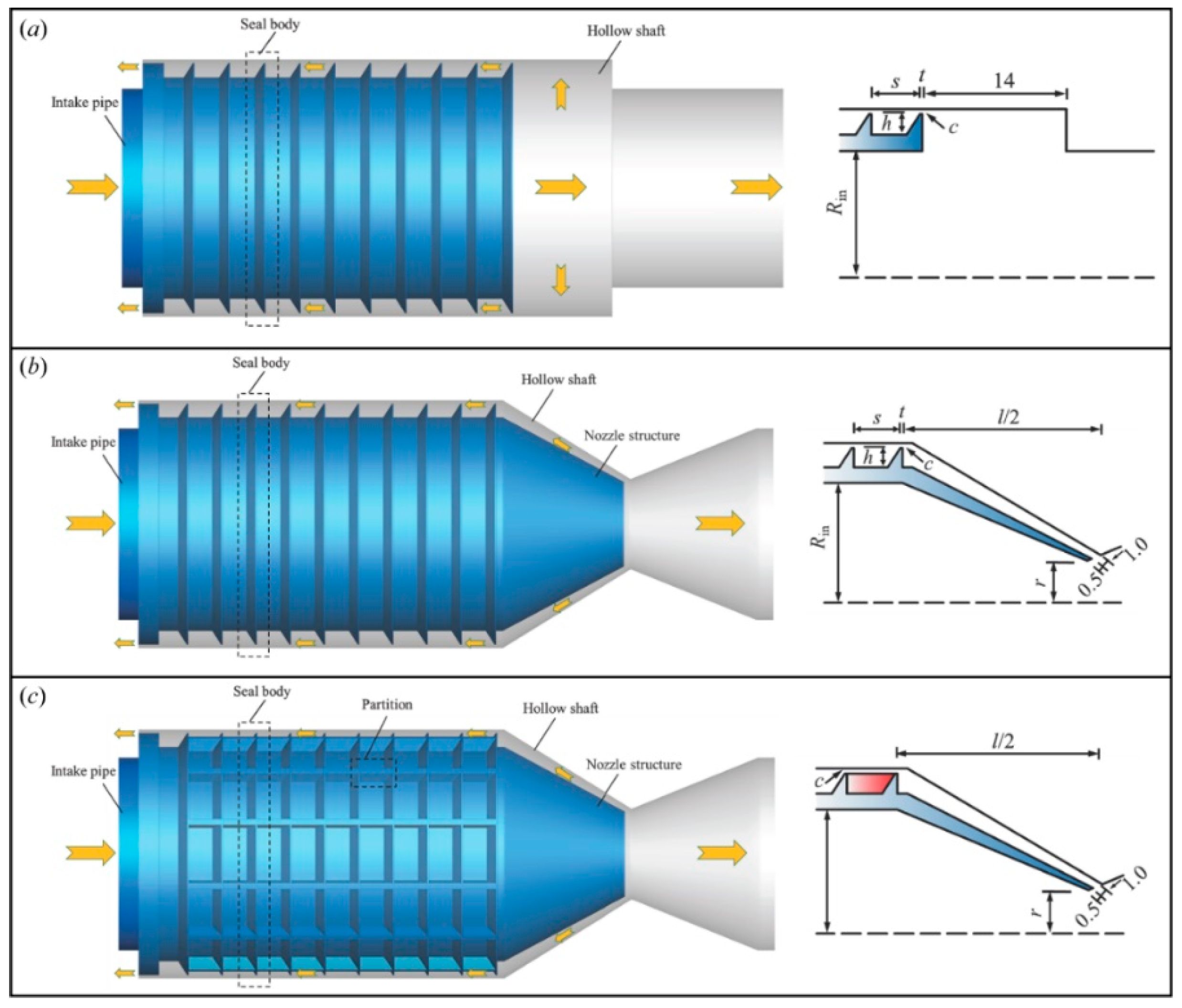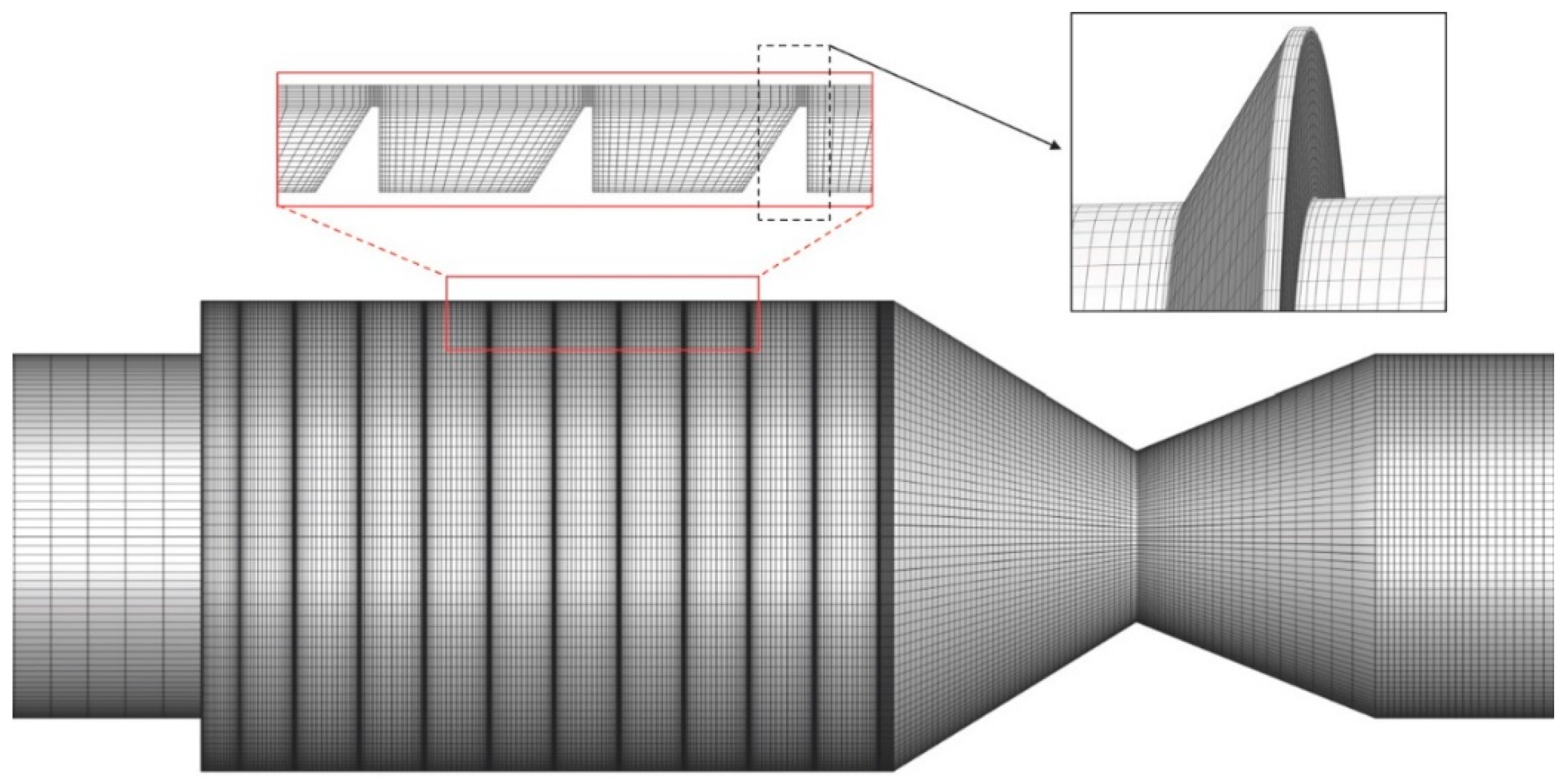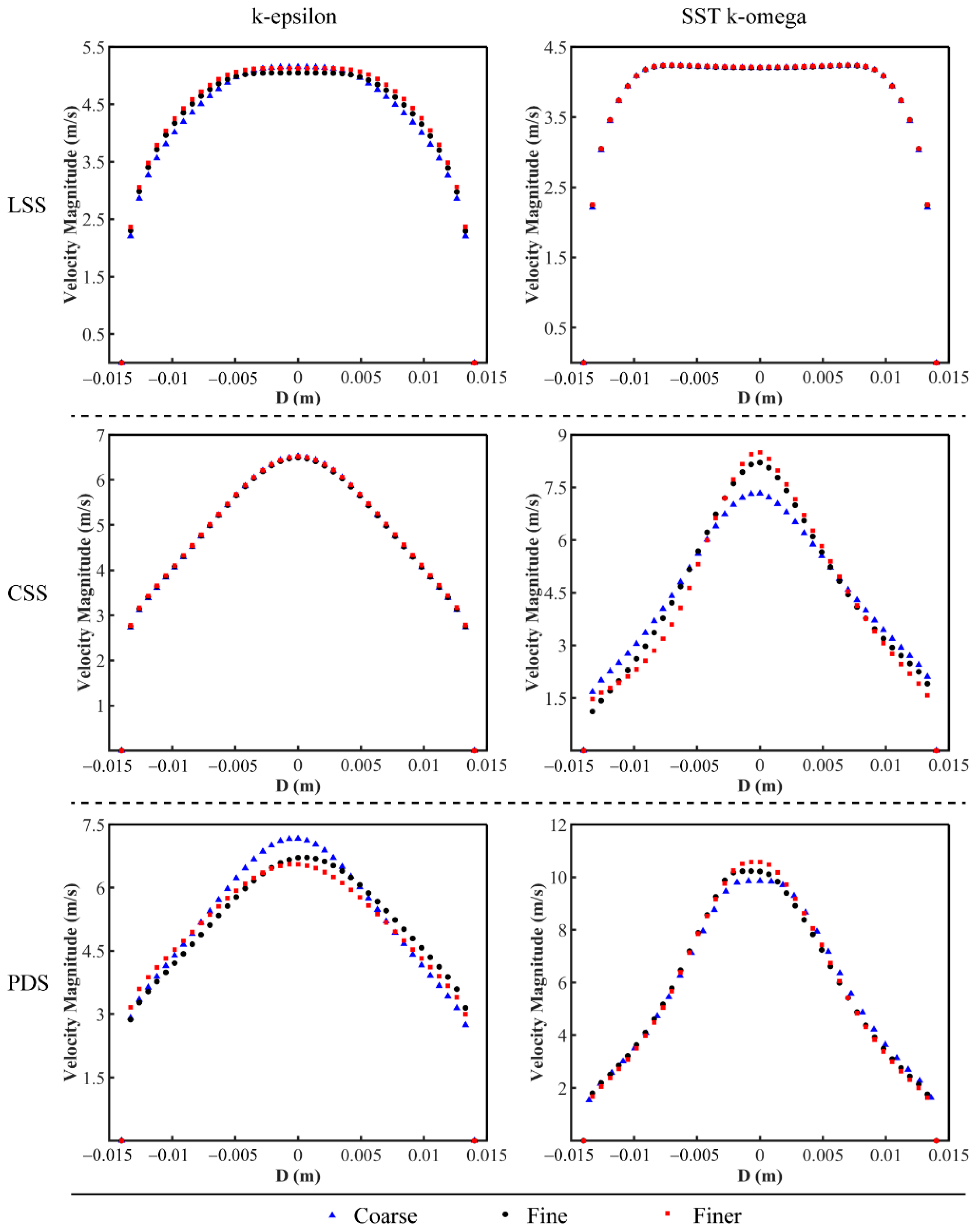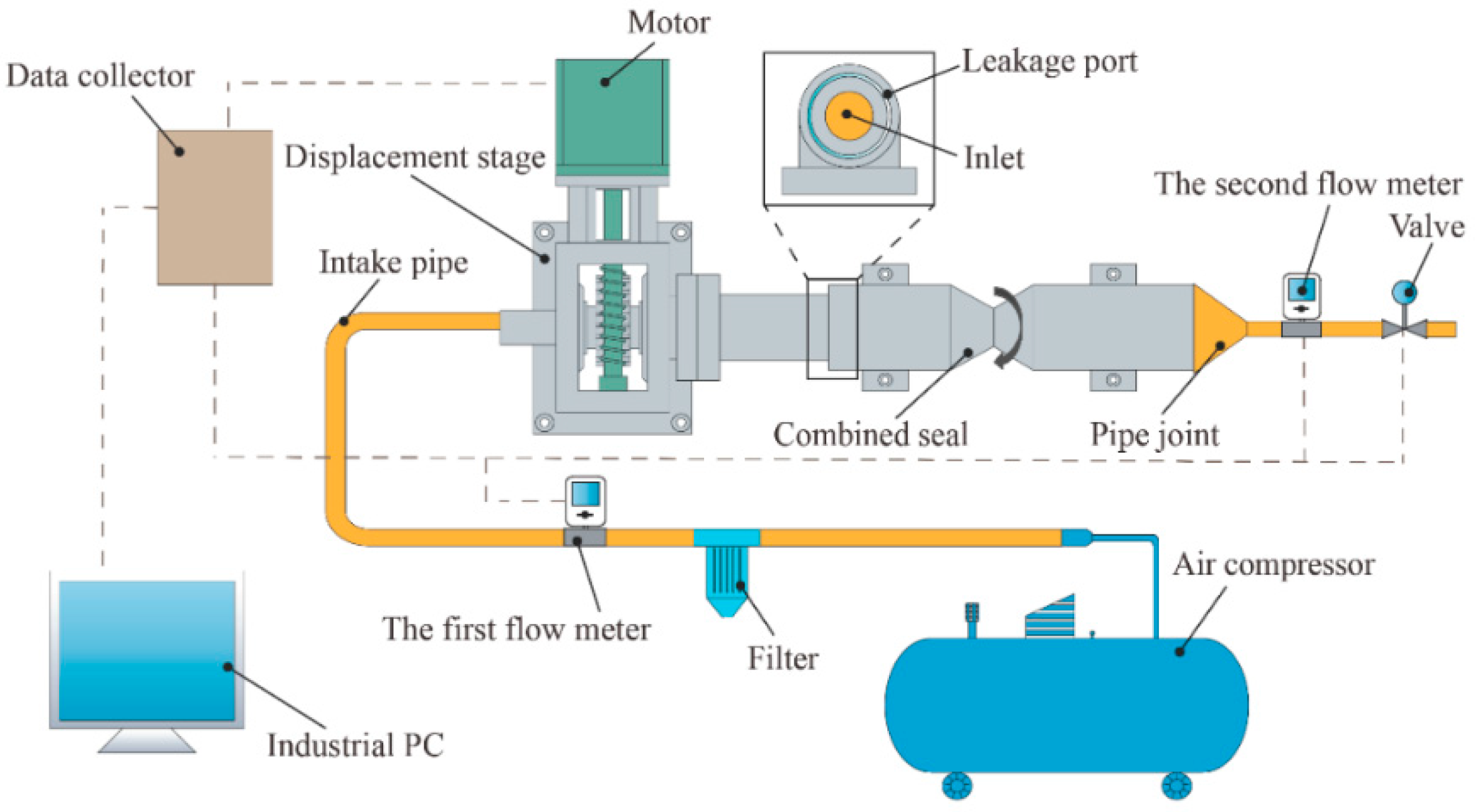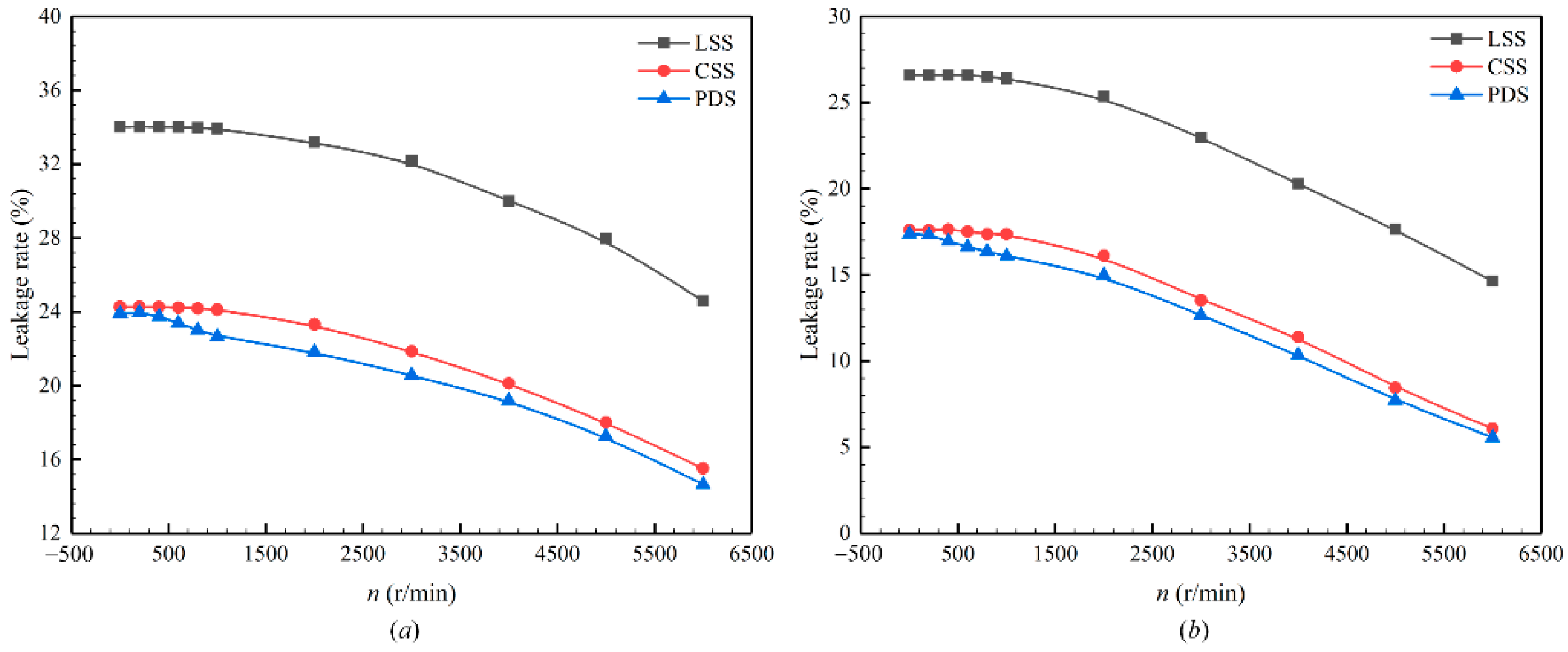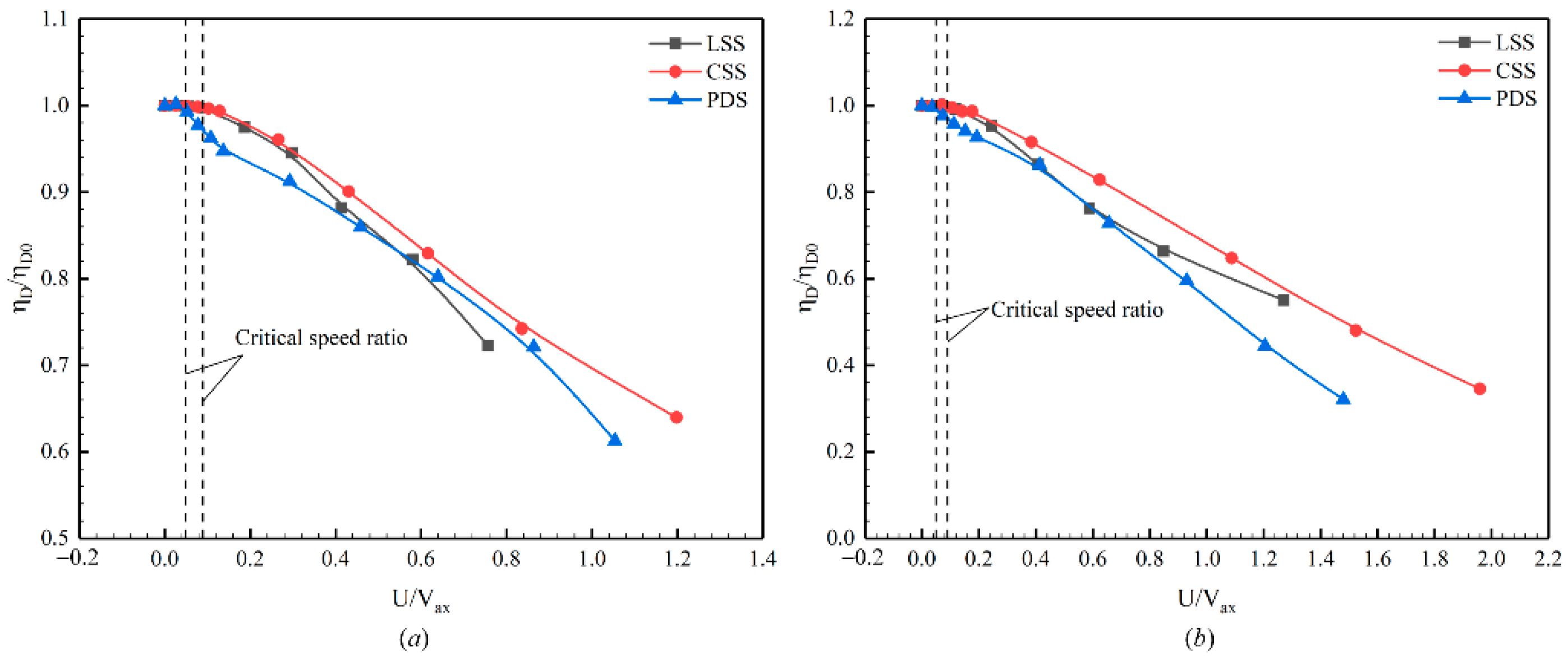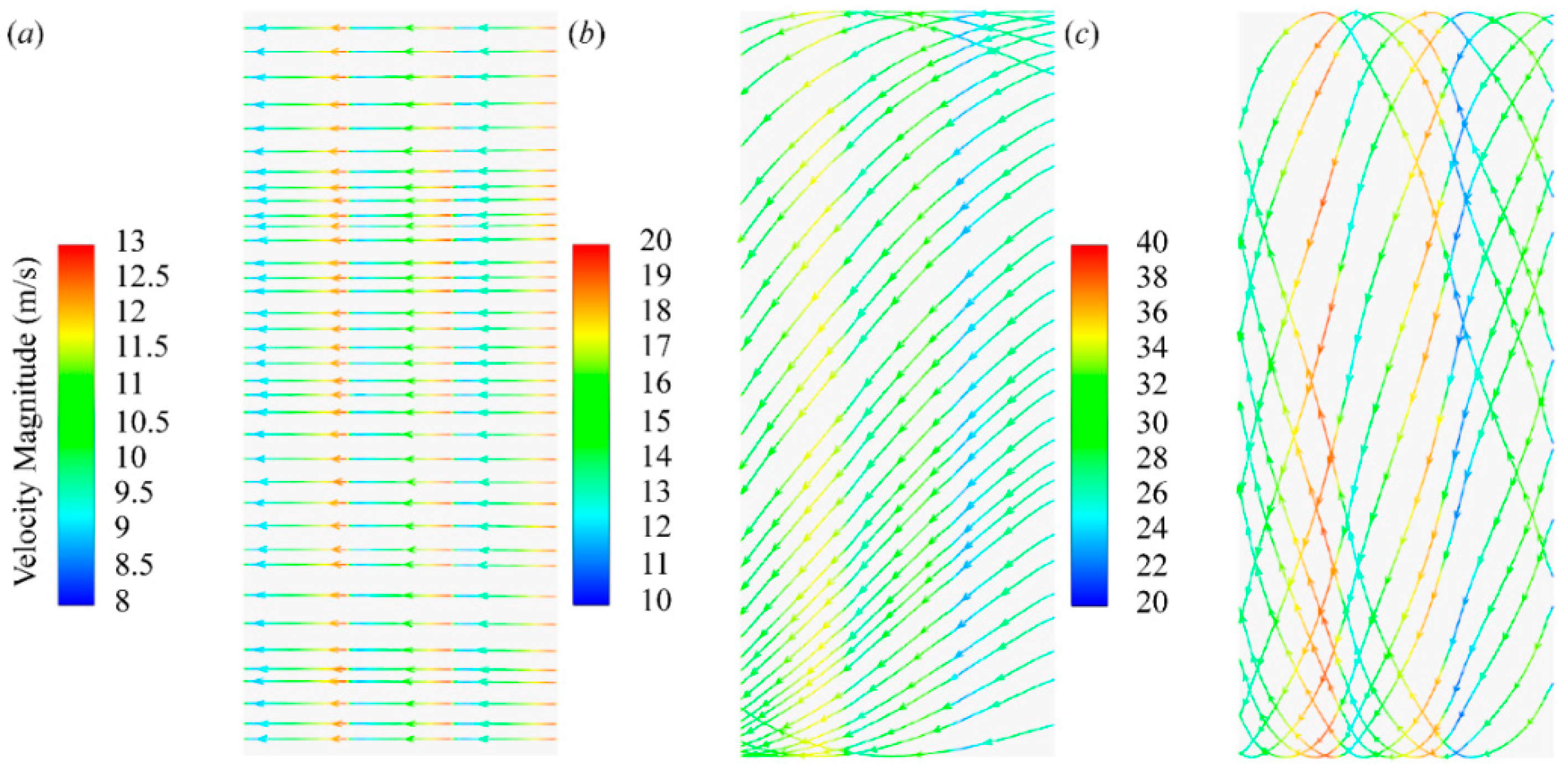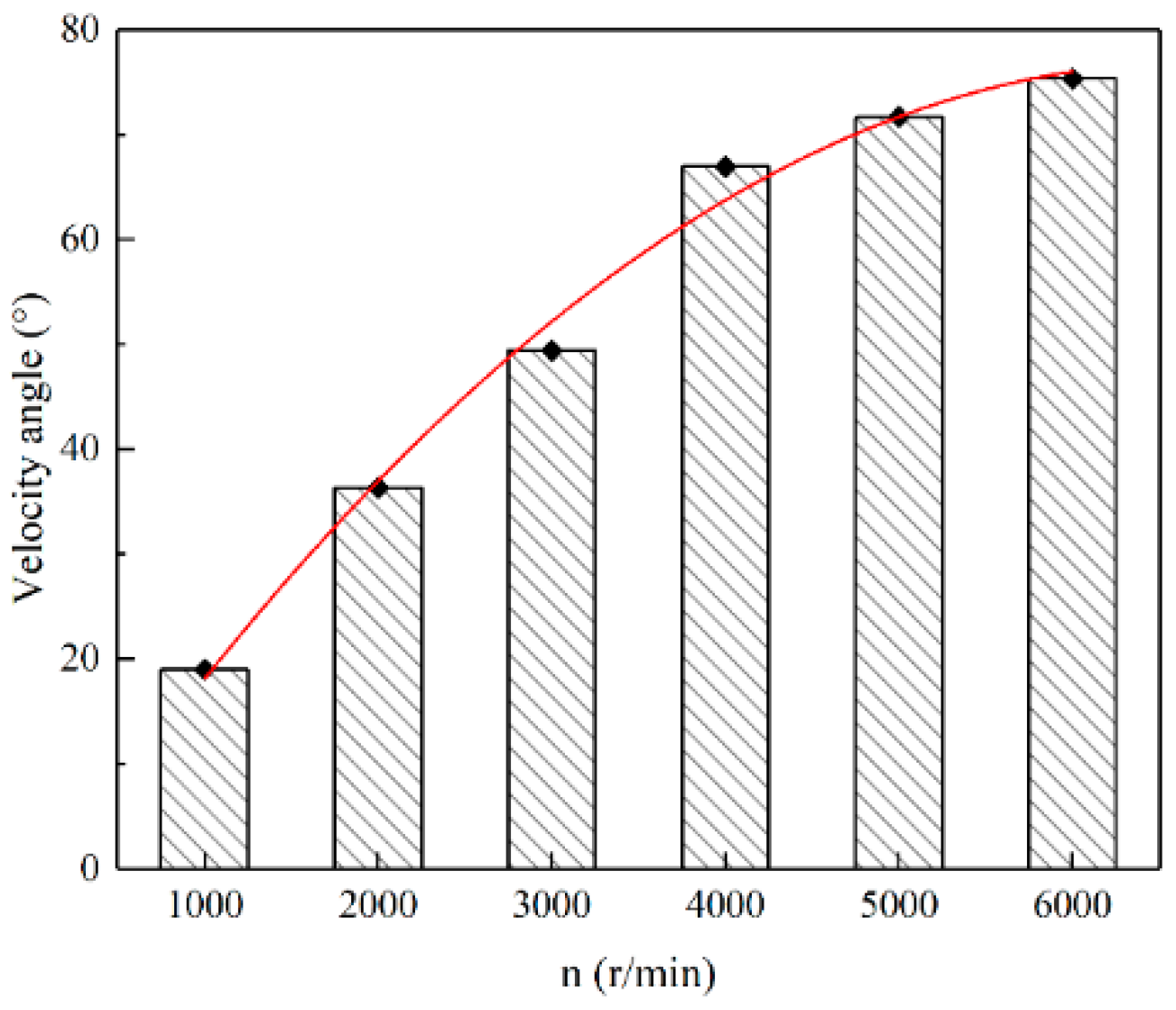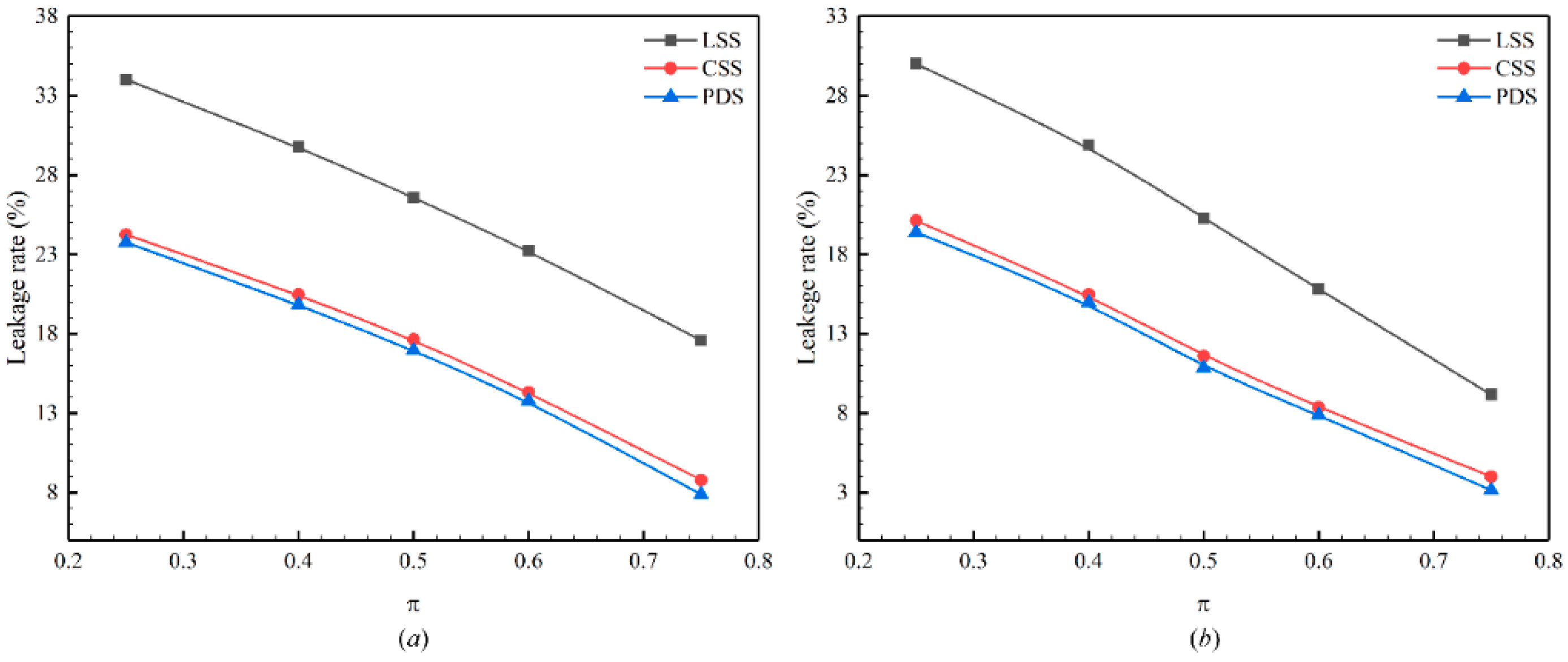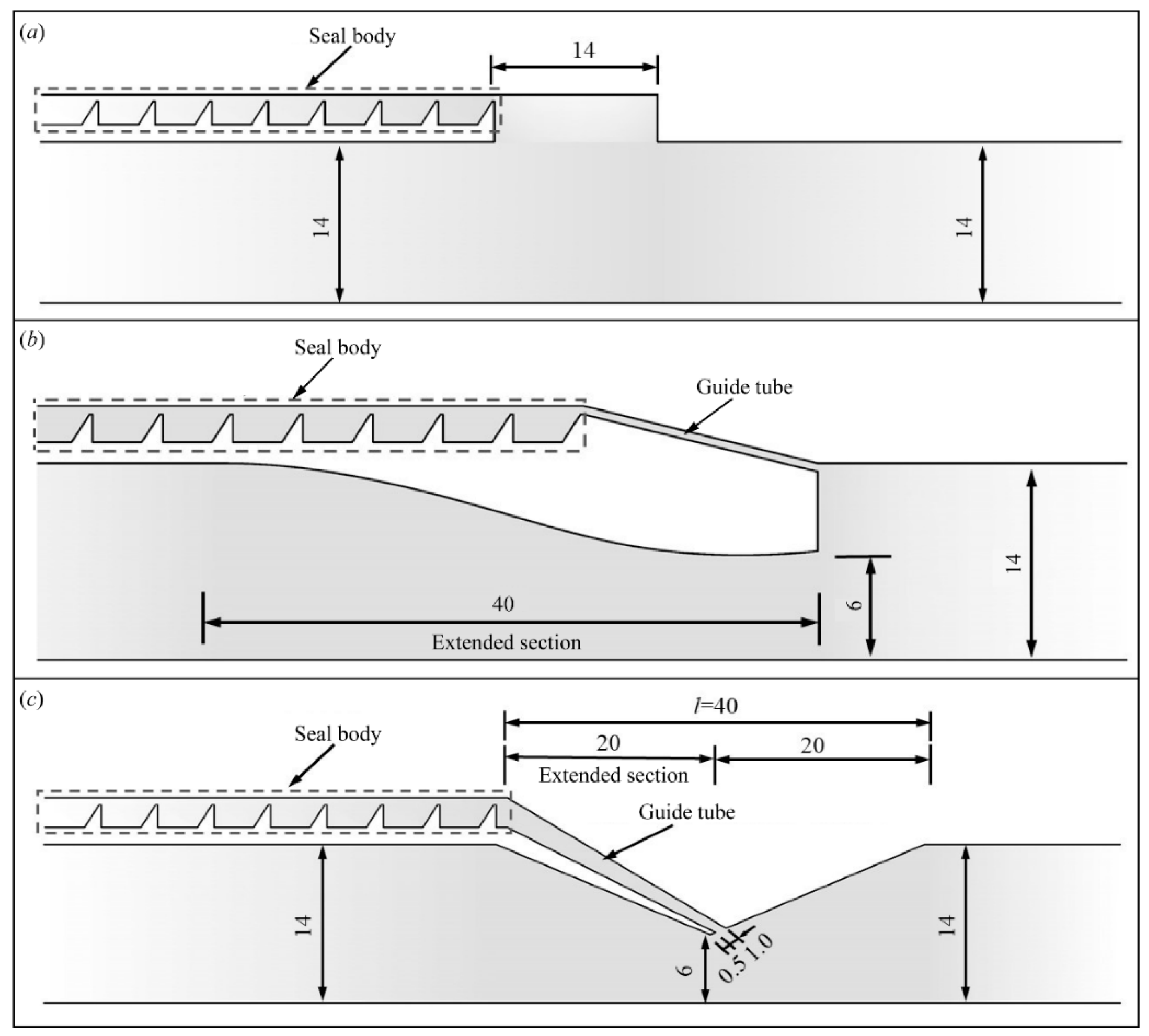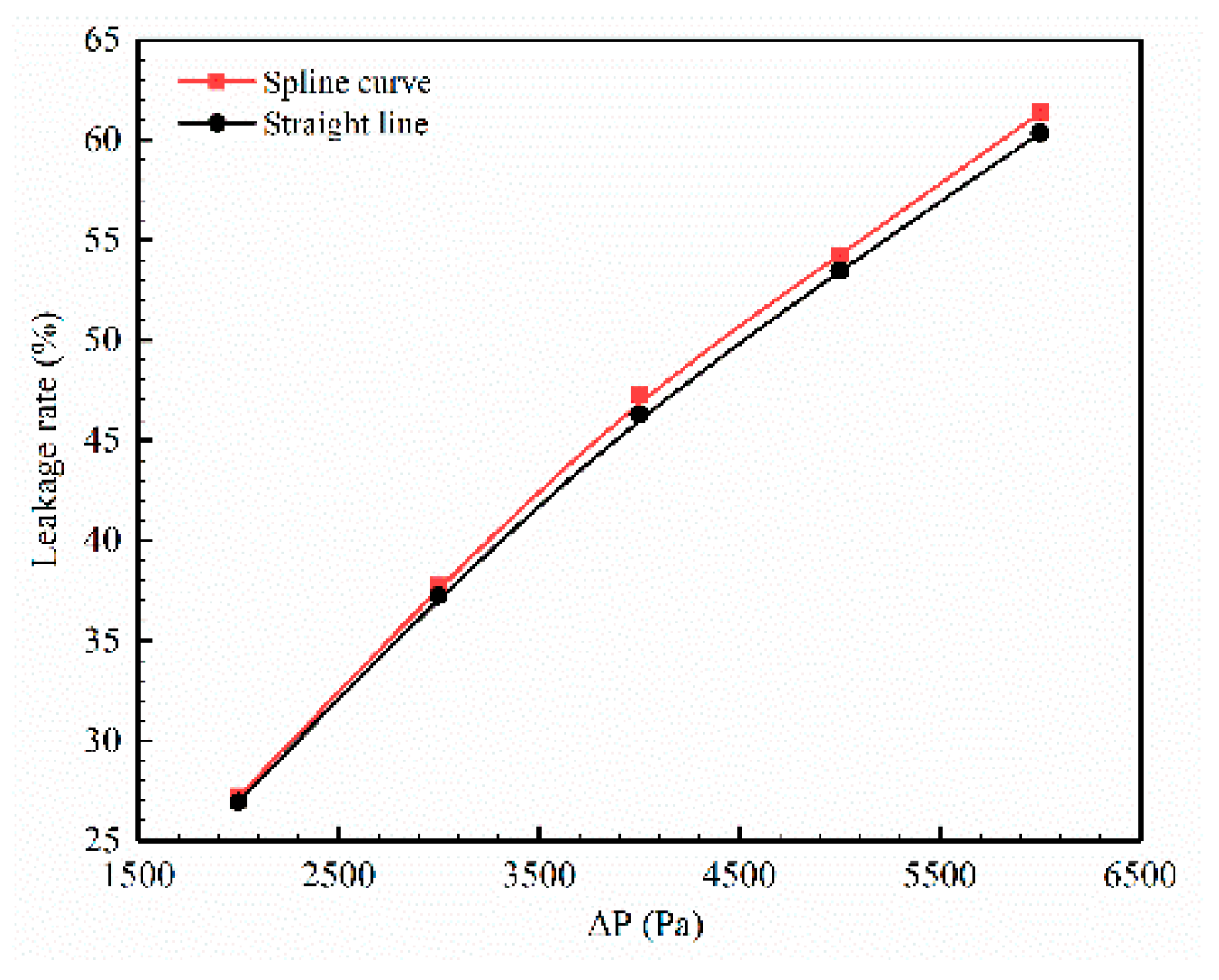As the use of rotational machinery develops towards high temperature, high pressure and high speed, correspondingly higher requirements have been put forward on the seal structure whose leakage characteristics will directly affect the working efficiency of the rotational machinery [
1]. As an example, with the upgrading of power system requirements, high-temperature superconducting motors with high efficiency, high power density, low noise of vibration and good overload capacity have emerged. Since the high-temperature superconducting motor generates an army of heat in the course of operation, the cooling system has an important influence on the efficiency of the motor. The seal structure, as a part of the cooling system, is essential to the successful operation of the high-temperature superconducting motor [
2,
3]. In the dynamic-static coupling device of rotational machinery, the fundamental goal of annular seals is to control the flow of fluid from the high-pressure zone to the low-pressure zone through the gap between the stator and the rotor in order to effectively reduce leakage and improve the aerodynamic efficiency of the rotational machine. Being a kind of annular seal, LSS is widely used in cooling systems, rotational packed beds, compressors, and other rotational machinery due to its simple structure and stable performance to throttle and reduce losses [
4,
5,
6,
7,
8]. However, under the condition of higher pressure, the sealing performance of LSS is unsatisfactory, which results in a large loss of efficiency of the rotational machinery. Therefore, how to promote the sealing performance of LSS, reduce its leakage, and improve the working efficiency of rotational machinery has become an urgent issue to be solved.
At present, a number of experts have proposed many different improvements for LSS, such as high and low tooth labyrinth seal structure, step labyrinth seal structure, staggered labyrinth seal structure, T-shaped seal structure and PDS, and these structures have achieved favorable results in practical applications [
9,
10,
11,
12,
13,
14,
15,
16]. As an example, Szymanski et al. [
17] put forward four configurations of labyrinth through seals: smooth platform, honeycomb platform, extruded honeycomb and diamond platform, and used experimental methods to study the labyrinth reference geometry and optimized geometry. Sankaranaryanasamy et al. [
18] defined a semi-empirical model that used neural network technology for data recognition and optimized the size of the sealed cavity. Li et al. [
19,
20] had optimized the structure of LSS, and compared the sealing performance of optimized T-shaped seal and staggered labyrinth seal with a straight-through labyrinth seal. When the axial length and the sealing gap of seal structure were in the same dimension, the leakage of the T-shaped seal was 23.6–25.3% less than that of the straight-through labyrinth seal, and approximately 7.4–8.5% more than the staggered labyrinth seal. Kim and Cha [
21] proposed that when the sealing gap was minor, the leakage characteristics of stepped seals were similar to straight-through seals, but as the gap became larger, the advantages of stepped seals would gradually become apparent. In 1991, Vance and Schultz [
22] first invented and tested PDS, which used partition walls to equally separate the gaps between the stator and the rotor. The structure has been widely studied since it can effectively address the issue of rotor instability in rotational machinery. In comparison with LSS, PDS has considerable direct damping (approximately 100 times that of LSS), which can effectively reduce rotor vibration effects [
23]. However, the disadvantages (static instability is easy to occur, and the processing is complex) of PDS are also evident, so it cannot be widely used in practical applications [
24]. In addition to the research on the improvement of structure of LSS, a large number of researchers have also conducted research on parameters (rotational speed, pressure ratio, etc.) that affect the leakage of LSS. Waschka et al. [
25] found that the effect of speed could be ignored at low rotational speeds, since the leakage rate remained essentially unchanged as the speed increased. Given that, Nayak [
26] studied the rotational effects of smooth and honeycomb cells at different seal gaps and speeds. The study revealed that as the speed increased, the seal emission coefficient remained constant until the critical speed was reached. Yahya et al. [
27] analyzed the influence of rotor speed on the distribution of flow and leakage of LSS, and interpreted the phenomenon that rotation of the rotor would accelerate the wear of the tooth tip. Pressure ratio is another vital factor that affects leakage in annual seals. One study found that an increase in the pressure ratio in annual seals would lead to a decrease in leakage [
28]. Li et al. [
29] further studied the influence of the pressure ratio on the leakage characteristics of the improved annual seal structure (PDS), and the results showed that the leakage flow increased with the decrease in the pressure ratio under the condition of constant inlet pressure.
The majority of the above studies have adopted theoretical and experimental methods to optimize the structure and parameters of annual seals. In addition to these two methods, numerical simulation is a new research method and a powerful tool, and has also been widely used in the research of annual seals. As an example, Bondarenko et al. [
30] analyzed the leakage of LSS with rotational speed under different pressure ratios through experiments and numerical simulations, and modified the calculation formula. Kong et al. [
31] studied the internal flow field of the high and low tooth labyrinth seal through numerical simulation, compared the leakage characteristics of the seal under different pressure ratios and speeds, and verified the results through experiments.
In the previous work, a new type of combined sealing structure (CSS) consisting of a nozzle structure and a labyrinth structure to improve the sealing effect under non-rotating conditions was proposed, and the numerical model was verified through experimental results [
32]. From this perspective, this study used numerical simulation to study the influence of pressure ratio and speed on the leakage characteristics of CSS, and compared it with LSS and PDS to evaluate the sealing characteristics under rotational conditions. In addition, the influencing factors such as jet structure shape, extended section, position of guide tube and nozzle radius were discussed in detail to reveal its sealing mechanism.
